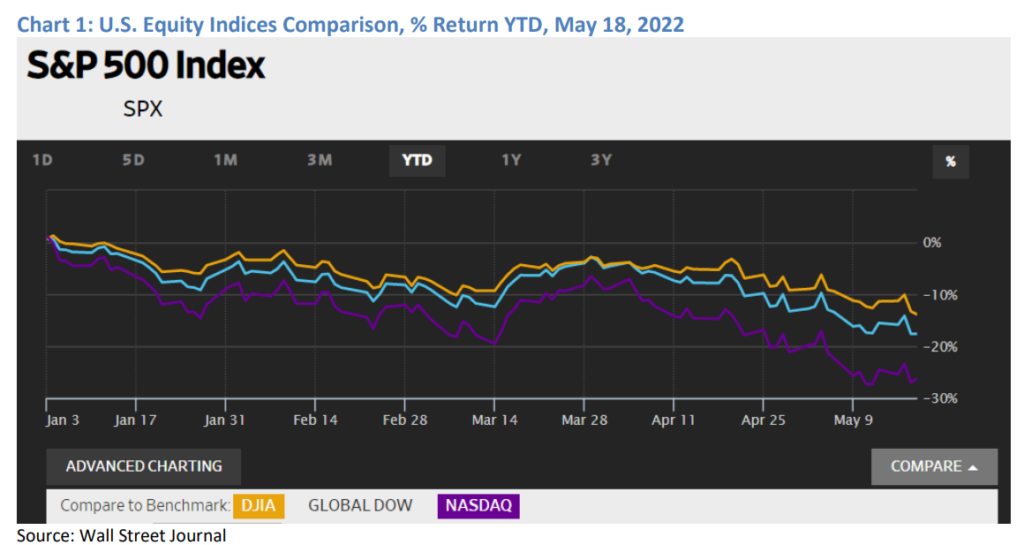Link: https://content.naic.org/sites/default/files/capital-markets-hot-spot-equity-markets-may2022.pdf
Graphic:

Excerpt:
On May 19, the S&P 500 opened the day near bear market territory; i.e., at a 20% drop from a recent
high. On May 18, the S&P 500 experienced a 4% decline—the largest single-day decrease since June 2020. The last time the S&P 500 entered bear market territory was in March 2020, albeit short-lived, as
the market turned around and headed into a two-year rally that peaked in early January 2022.
The current equity market losses (and some corporate bond losses) are primarily the result of several
factors: 1) earnings reports from large American retailers, including Walmart and Target, show evidence
that the continued high inflation rate may be affecting consumer demand; 2) the war in Ukraine has
added to inflationary pressures, prompting the Federal Reserve (Fed) to increase interest rates and
reduce bond holdings; and 3) recent COVID-19 shutdowns in China have led to a slowdown in the
world’s second largest economy.
Author(s): Jennifer Johnson and Michele Wong
Publication Date: 19 May 2022
Publication Site: NAIC Capital Markets Special Report


